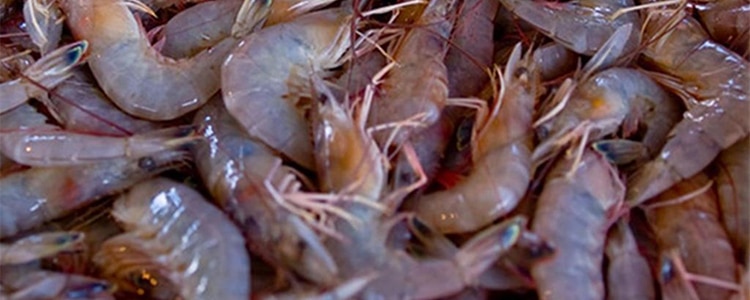Commercially Caught Wild American Shrimp From Gulf of Mexico Remain Safe to Eat
July 12, 2019

Biloxi, Miss. July 8, 2019 – For the commercial wild-caught shrimp industry in the Gulf of Mexico, it’s business as usual.
In spite of reports coming out of the Gulf of Mexico about a freshwater influx due to flooding in the Midwest, along with some resulting, close-to-shore algae blooms, commercial shrimp processors are reporting that this year, though volumes are lower, shrimp quality and size are good as ever.
“The Mississippi Department of Marine Resources (MDMR) is continuing to test water and fish samples to ensure seafood safety in Mississippi waters,” said MDMR Executive Director Joe Spraggins. “MDMR is advising fishermen to avoid catching seafood in waters where algae is present. Thus far, the water samples tested by MDMR and the National Oceanic and Atmospheric Administration have not shown toxin levels high enough to warrant concern for the consumption of local seafood. Recreational and commercial fishing off-shore in Mississippi waters remains unaffected by the algae bloom and is safe for consumption. The MDMR is committed to frequent sampling to ensure the safety for fresh locally-caught seafood.”
Spraggins echoed these sentiments in the New York Post, saying, “The water quality doesn’t reach anywhere to the point that would cause us to be alarmed about seafood.’” The state had sent seafood samples to the National Oceanic and Atmospheric Administration for tests and nothing wrong or harmful about the food was found.
“Brown shrimp, the kind of shrimp harvested in the spring and early summer months in near-shore waters in the upper Gulf prefer a higher salinity environment,” said Dr. David Veal, Executive Director of the American Shrimp Processors Association. “Shrimp are more than capable of moving between areas in search of pristine environmental conditions optimum for their growth.”
Restaurants and grocery chains around the country purchase the vast majority of their U.S. wild-caught shrimp from shrimp processors or their distributors. Mississippi processors are a value-added industry for the state of Mississippi. While Mississippi waters only produce about 6 million pounds annually, these processors produce about 25-30 million pounds of shrimp. That 19- to 24-million pound difference comes from other states.
“We are very proud of the fact that Mississippi has become a value-added state when it comes to shrimp processing,” said Dr. Veal. “But that also means that while shrimp in Mississippi waters are not commercially-caught inside the algae bloom, there’s a good chance that shrimp labeled as processed in Mississippi weren’t even caught there.”
More information on the efforts of ASPA and its members can be accessed via www.americanshrimp.com.
Suggested Articles
ASPA Fights Back Against Indian Shrimp Imports Made with Forced Labor
Port Arthur, TX (April 16, 2024) The American Shrimp Processors Association (ASPA) is taking aggressive action to combat imports of shrimp from India that were...
Read More April 2024American Shrimp Processors Association Launches Trade Petitions Addressing Unfair Dumping and Illegal Subsidies
Read additional information about the trade petitions, including public copies of ASPA filings. Today, the American Shrimp Processors Association (ASPA) filed trade petitions seeking antidumping...
Read More October 2023Bipartisan Legislation Introduced to Ensure the Availability of Healthy and Safe American Shrimp
WASHINGTON, DC – U.S. Representatives Garret Graves (Louisiana) and Kathy Castor (Florida) introduced legislation to stop unsafe, illegally-produced shrimp from reaching consumers. Much of the shrimp...
Read More August 2023

